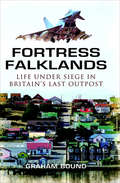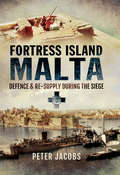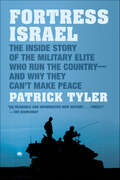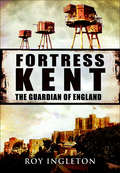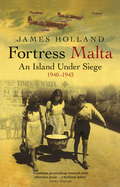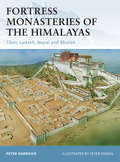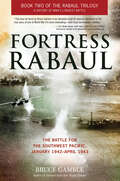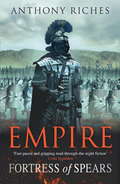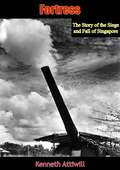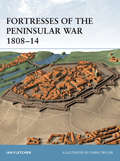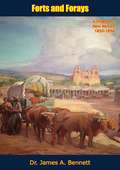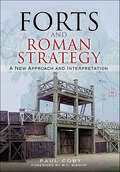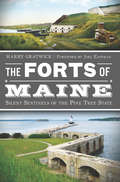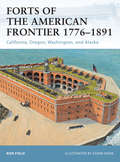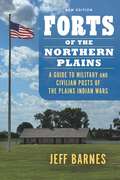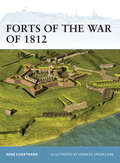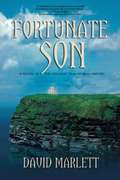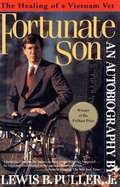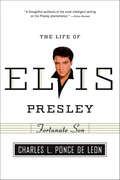- Table View
- List View
Fortress Falklands: Life Under Siege in Britain's Last Outpost
by Graham BoundThe Falkland Islands sprang to fame in 1982, when Argentine Forces invaded and occupied them. British rule was re-established following an intensely violent war. But, as the 30th anniversary of that conflict approaches, the causes of conflict in the Falklands have not been resolved. Simmering tensions means that a powerful military machine remains on the islands, and its guard is never relaxed. The UK has some of its most modern and powerful defense assets there, and on permanent standby. These include Eurofighter Typhoon interceptors; ground to air missiles; mountaintop radar sites, and destroyers and frigates. In addition, the islanders themselves have a potent infantry defense force. Graham Bounds book Fortress Falklands examines the defenses of the islands today and the ongoing need for vigilance.Relations with Argentina have deteriorated since the discovery of oil in Falklands waters and a boom in the Falklands economy. In response, Buenos Aires has established a ban on shipping links between South America and the islands, and they exploit every opportunity to press their case for sovereignty. Islanders believe they are under economic siege.
Fortress Islands Malta: Defence & Re-Supply During the Siege
by Peter JacobsThe introduction of Italy into the Second World War on 10 June 1940 signalled the start of the siege of Malta, and for the next two and a half years the Axis powers did all they could to batter the small island into submission. Maltas defences were initially verging on non-existent but the British Prime Minister, Winston Churchill, could not give up on the island. Laying at the crossroads of the Mediterranean, where the supply route between Italy and the Axis armies in Libya crossed the Allied sea route between Gibraltar and Alexandria, almost exactly at its mid-point, Malta was strategically too important and held the key to the door of the desert war being fought in North Africa.If Malta could be held then it would allow British forces to maintain an offensive capability in the Mediterranean and prevent Axis supplies from reaching North Africa. But everything needed to fight a campaign people, food, fuel, ammunition, medical stores, aircraft and spares would have to be delivered to Malta in sufficient numbers and on a regular basis. It would take a monumental air and maritime effort just to survive, let alone hit back, and to manage both would require those in command to carefully balance Maltas precious and limited resources. Otherwise, it meant surrender and who knows what the outcome of the Second World War might have been had the island fallen. Here, the accomplished military author Peter Jacobs tells the extraordinary story of the heroic defence and re-supply of the Fortress Island of Malta during the longest siege in British history.Links End Links Author
Fortress Israel: The Inside Story of the Military Elite Who Run the Country—and Why They Can't Make Peace
by Patrick Tyler"Once in the military system, Israelis never fully exit," writes the prizewinning journalist Patrick Tyler in the prologue to Fortress Israel. "They carry the military identity for life, not just through service in the reserves until age forty-nine . . . but through lifelong expectations of loyalty and secrecy." The military is the country to a great extent, and peace will only come, Tyler argues, when Israel's military elite adopt it as the national strategy.Fortress Israel is an epic portrayal of Israel's martial culture—of Sparta presenting itself as Athens. From Israel's founding in 1948, we see a leadership class engaged in an intense ideological struggle over whether to become the "light unto nations," as envisioned by the early Zionists, or to embrace an ideology of state militarism with the objective of expanding borders and exploiting the weaknesses of the Arabs. In his first decade as prime minister, David Ben-Gurion conceived of a militarized society, dominated by a powerful defense establishment and capable of defeating the Arabs in serial warfare over many decades. Bound by self-reliance and a stern resolve never to forget the Holocaust, Israel's military elite has prevailed in war but has also at times overpowered Israel's democracy. Tyler takes us inside the military culture of Moshe Dayan, Yitzhak Rabin, Ariel Sharon, and Benjamin Netanyahu, introducing us to generals who make decisions that trump those of elected leaders and who disdain diplomacy as appeasement or surrender.Fortress Israel shows us how this martial culture envelops every family. Israeli youth go through three years of compulsory military service after high school, and acceptance into elite commando units or air force squadrons brings lasting prestige and a network for life. So ingrained is the martial outlook and identity, Tyler argues, that Israelis are missing opportunities to make peace even when it is possible to do so. "The Zionist movement had survived the onslaught of world wars, the Holocaust, and clashes of ideology," writes Tyler, "but in the modern era of statehood, Israel seemed incapable of fielding a generation of leaders who could adapt to the times, who were dedicated to ending . . . [Israel's] isolation, or to changing the paradigm of military preeminence."Based on a vast array of sources, declassified documents, personal archives, and interviews across the spectrum of Israel's ruling class, FortressIsrael is a remarkable story of character, rivalry, conflict, and the competing impulses for war and for peace in the Middle East.
Fortress Kent
by Roy IngletonSince the dawn of civilization, Britain has been menaced by foreign powers and invasive hordes, anxious either to pillage and plunder or to invade and rule over this green and pleasant land. Situated on the extreme southeastern corner of England, the county of Kent is the nearest point to continental Europe, and has so been the targeted landing point for most of these incursions. From the time of the Angles, Jutes and Saxons to the Second World War, the Men of Kent and Kentish Men have had to set up and maintain defensive structures, from Norman castles to 1940 pill boxes, from the Royal Military Canal to the anti-tank ditches carved out of the hills around the coast. This book is the story of these: the threats which led to the erection and construction of various defensive obstacles, their upkeep and garrisoning and, in some cases, their ultimate destruction.
Fortress Malta: An Island Under Siege 1940-1943
by James HollandThe extraordinary drama of Malta's WWII victory against impossible odds told through the eyes of the people who were there.In March and April 1942, more explosives were dropped on the tiny Mediterranean island of Malta - smaller than the Isle of Wight - than on the whole of Britain during the first year of the Blitz. Malta had become one of the most strategically important places in the world. From there, the Allies could attack Axis supply lines to North Africa; without it, Rommel would be able to march unchecked into Egypt, Suez and the Middle East. For the Allies this would have been catastrophic. As Churchill said, Malta had to be held 'at all costs'.FORTRESS MALTA follows the story through the eyes of those who were there: young men such as twenty-year-old fighter pilot Raoul Daddo-Langlois, anti-aircraft gunner Ken Griffiths, American Art Roscoe and submariner Tubby Crawford - who served on the most successful Allied submarine of the Second World War; cabaret dancer-turned RAF plotter Christina Ratcliffe, and her lover, the brilliant and irrepressible reconnaissance pilot, Adrian Warburton. Their stories and others provide extraordinary first-hand accounts of heroism, resilience, love, and loss, highlighting one of the most remarkable stories of World War II.
Fortress Malta: An Island Under Siege 1940-1943 (W&N Military)
by James HollandThe extraordinary drama of Malta's WWII victory against impossible odds told through the eyes of the people who were there.In March and April 1942, more explosives were dropped on the tiny Mediterranean island of Malta - smaller than the Isle of Wight - than on the whole of Britain during the first year of the Blitz. Malta had become one of the most strategically important places in the world. From there, the Allies could attack Axis supply lines to North Africa; without it, Rommel would be able to march unchecked into Egypt, Suez and the Middle East. For the Allies this would have been catastrophic. As Churchill said, Malta had to be held 'at all costs'.FORTRESS MALTA follows the story through the eyes of those who were there: young men such as twenty-year-old fighter pilot Raoul Daddo-Langlois, anti-aircraft gunner Ken Griffiths, American Art Roscoe and submariner Tubby Crawford - who served on the most successful Allied submarine of the Second World War; cabaret dancer-turned RAF plotter Christina Ratcliffe, and her lover, the brilliant and irrepressible reconnaissance pilot, Adrian Warburton. Their stories and others provide extraordinary first-hand accounts of heroism, resilience, love, and loss, highlighting one of the most remarkable stories of World War II.
Fortress Monasteries of the Himalayas
by Peter Dennis Peter HarrisonBuddhism has been influential in the mountain kingdoms of the Himalayas since the 7th century AD, most notably in the kingdom of Tibet where it permeated all aspects and levels of society until the 20th century. From the 9th-century AD onwards, the secular rulers of Tibet sought to extend their influence, and that of Buddhism, throughout the region. To this end, huge stone and mud-brick fortifications, known as dzongs, were constructed to dominate the secular landscape, while massive Buddhist monasteries dominated the religious - both following a very specific style of Tibetan architecture. It has been estimated that as many as 3,000 monasteries were built along with 200 dzongs. Mongol invasions from the 12th century onwards provided another influence, while internecine fighting in the 17th century led to increased fortification of the monasteries and the rise of the Dalai Lama as the head of a theocracy in Tibet, centred on the Potala Palace in Lhasa - a true fusion between secular dzong and religious monastery.Elsewhere in the Tibetan-influenced Himlayas the Buddhist Indian Kashmiri kingdom of Ladakh withstood assaults by both Muslims and Sikhs and developed a style of fortress monastery located on rocky peaks for defence, these often became combined with the fortified palaces of the rulers of Ladakh. With the foundation of Bhutan in the 17th century, further fortified monasteries were created in an effort to protect the new state's independence form the Dalai Lama.These fortifications have survived largely intact through today, as Chinese control over the Tibetan Autonomous Region has led to the destruction of the vast majority of the fortified monasteries and dzongs of that particular area.This title recreates the dramatic and colorful fortifications created in these mountain kingdoms, and recounts their operational history through the foreign incursions, religious conflicts and civil wars that litter their history, right through to the Tibetan uprising and flight of the Dalai Lama form the Potala Palace in 1959
Fortress Rabaul: The Battle for the Southwest Pacific, January 1942–April 1943 (The Rabaul Trilogy)
by Bruce Gamble“This tour de force . . . is an absolute must for anyone interested in the true story of one of World War II’s most interesting—and most overlooked—battles.” —Col. Walter Boyne, USAF (Ret.), author of Clash of WingsFor most of World War II, the mention of Japan’s island stronghold sent shudders through thousands of Allied airmen. Some called it “Fortress Rabaul,” an apt name for the headquarters of the Imperial Japanese forces in the Southwest Pacific. Author Bruce Gamble chronicles Rabaul’s crucial role in Japanese operations in the Southwest Pacific. Millions of square feet of housing and storage facilities supported a hundred thousand soldiers and naval personnel. Simpson Harbor and the airfields were the focus of hundreds of missions by American air forces.Winner of the “Gold Medal” (Military Writers Society of America) and “Editor’s Choice Award” (Stone and Stone Second World War Books), Fortress Rabaul details a critical and, until now, little understood chapter in the history of World War II.“Not for the first time, Bruce Gamble has done amazing work gathering a dazzling array of tiny, little facts, then arranging them in a big, dazzling story that amazes one’s inner historian even as it breaks one’s heart on its way to a triumphal conclusion.” —Eric Hammel, author of Two Flags over Iwo Jima“Drawing on a variety of sources from both sides, the author has written a detailed reference book that reads like a novel.” —Air Classics“Fortress Rabaul opens a broader vista on this under-studied campaign with its wide research, thoughtful analysis, and gifted story-teller’s panache.” —WWII History Magazine
Fortress of Snow (A Dericott Tale #4)
by Melanie DickersonMazy dreams of independence. Sir Berenger longs to play the hero. But in each other, they may find the secret to happily ever after.Mazelina of Wexcombe has always dreamed of traveling with her father to lands beyond the confining walls of their castle. But his sudden death deprives her of the future she imagined. Abandoned by her eldest brother, Mazy is soon forced to seek help from her beloved brother Sir John at the great estate of Strachleigh.Her visit leads to a friendship with the dashing and noble Sir Berenger of Dericott. He has notions of rescuing a damsel in distress. But Mazy is brave enough to defend herself—and has proven that her skills in archery and knife throwing rival that of a knight&’s. So when he is called away to Prussian lands, Sir Berenger looks to distinguish himself in battle.When Sir Berenger returns, he and Mazy meet again on the streets of London, where she is making a living selling goods in the market. Meanwhile, he has been summoned by the king to receive a reward for his service. But the recognition comes with a price: He must marry a wealthy, titled widow to please the king. But when Mazy begins to suspect treachery, she embarks on a journey to the fortress of snow to warn the brave knight—and secure her own fairy-tale ending.In this fourth novel set in the Dericott universe, Melanie Dickerson weaves an exciting reimagining of the Snow Queen tale.&“When it comes to happily-ever-afters, Melanie Dickerson is the undisputed queen.&” —Julie Lessman, award-winning authorSweet historical medieval romancePart of the Dericott series: Book 1: Court of Swans; Book 2: Castle of Refuge; Book 3: Veil of Winter; Book 4: Fortress of SnowBook length: 85,000 wordsIncludes discussion questions for book clubs
Fortress of Spears: Empire III
by Anthony Riches'A master of the genre' The TimesIn the enthralling third volume of Empire, Anthony Riches takes the legions deep into north Britannia, where the survivors of the rebellion still hope for revenge.The Romans have vanquished the rebel alliance, leaving Calgus, Lord of the Northern Tribes, the prisoner of the chieftains he once led. But the new Roman leader will not let them rest. He forms an audacious plan to capture Dinpaladyr, the Selgovaes' fortress of spears, and return it to the hands of a trusted ally. Marcus Aquila - burning for revenge on an enemy army that has killed one of his best friends - is part of the select group of infantry chosen to go north with the Petriana cavalry and take the fort before the rebel army can reach it. He believes his disguise as Centurion Corvus of the 2nd Tungrians is still holding. But he is just a few days ahead of two of the emperor's agents, sent from Rome to kill him. Pitiless assassins who know his real name, and too much about his friends.
Fortress of Spears: Empire III (Empire series #3)
by Anthony RichesIn the enthralling third volume of Empire, Anthony Riches takes the legions deep into north Britannia, where the survivors of the rebellion still hope for revenge.The Romans have vanquished the rebel alliance, leaving Calgus, Lord of the Northern Tribes, the prisoner of the chieftains he once led. But the new Roman leader will not let them rest. He forms an audacious plan to capture Dinpaladyr, the Selgovaes' fortress of spears, and return it to the hands of a trusted ally. Marcus Aquila - burning for revenge on an enemy army that has killed one of his best friends - is part of the select group of infantry chosen to go north with the Petriana cavalry and take the fort before the rebel army can reach it. He believes his disguise as Centurion Corvus of the 2nd Tungrians is still holding. But he is just a few days ahead of two of the emperor's agents, sent from Rome to kill him. Pitiless assassins who know his real name, and too much about his friends.(P)2011 Hodder & Stoughton Audiobooks
Fortress of Spears: Fortress Of Spears (Empire series #3)
by Anthony RichesIn the enthralling third volume of Empire, Anthony Riches takes the legions deep into north Britannia, where the survivors of the rebellion still hope for revenge.'A master of the genre' The TimesThe Romans have vanquished the rebel alliance, leaving Calgus, Lord of the Northern Tribes, the prisoner of the chieftains he once led. But the new Roman leader will not let them rest. He forms an audacious plan to capture Dinpaladyr, the Selgovaes' fortress of spears, and return it to the hands of a trusted ally. Marcus Aquila - burning for revenge on an enemy army that has killed one of his best friends - is part of the select group of infantry chosen to go north with the Petriana cavalry and take the fort before the rebel army can reach it. He believes his disguise as Centurion Corvus of the 2nd Tungrians is still holding. But he is just a few days ahead of two of the emperor's agents, sent from Rome to kill him. Pitiless assassins who know his real name, and too much about his friends.
Fortress of the Soul: Violence, Metaphysics, and Material Life in the Huguenots' New World, 1517-1751 (Early America: History, Context, Culture)
by Neil KamilFrench Huguenots made enormous contributions to the life and culture of colonial New York during the seventeenth and eighteenth centuries. Huguenot craftsmen were the city's most successful artisans, turning out unrivaled works of furniture which were distinguished by unique designs and arcane details. More than just decorative flourishes, however, the visual language employed by Huguenot artisans reflected a distinct belief system shaped during the religious wars of sixteenth-century France.In Fortress of the Soul, historian Neil Kamil traces the Huguenots' journey to New York from the Aunis-Saintonge region of southwestern France. There, in the sixteenth century, artisans had created a subterranean culture of clandestine workshops and meeting places inspired by the teachings of Bernard Palissy, a potter, alchemist, and philosopher who rejected the communal, militaristic ideology of the Huguenot majority which was centered in the walled city of La Rochelle. Palissy and his followers instead embraced a more fluid, portable, and discrete religious identity that encouraged members to practice their beliefs in secret while living safely—even prospering—as artisans in hostile communities. And when these artisans first fled France for England and Holland, then left Europe for America, they carried with them both their skills and their doctrine of artisanal security.Drawing on significant archival research and fresh interpretations of Huguenot material culture, Kamil offers an exhaustive and sophisticated study of the complex worldview of the Huguenot community. From the function of sacred violence and alchemy in the visual language of Huguenot artisans, to the impact among Protestants everywhere of the destruction of La Rochelle in 1628, to the ways in which New York's Huguenots interacted with each other and with other communities of religious dissenters and refugees, Fortress of the Soul brilliantly places American colonial history and material life firmly within the larger context of the early modern Atlantic world.
Fortress: The Story of the Siege and Fall of Singapore
by Kenneth AttiwillFortress: The Story of the Siege and Fall of Singapore, first published in 1959, is the sobering account of the failed defense of Singapore in late 1941 and early 1942 against the advancing Japanese Army.In Fortress, author Kenneth Attiwill—himself a prisoner of the Japanese for three and a half years—recreates, in vivid detail, the fall of Singapore in World War II: the unforgettable atmosphere of chaos, misunderstanding, panic bombings, evacuation of civilians, ill-trained troops, the invasion of Japanese troops, and the beginnings of tortures as the “Fortress” fell.Here is an engrossing analysis of the Singapore defeat—in strategy caused by the failure of the Chief of Staff in London to activate the British defense in Malaya; in the air due to disorganization at Air Command Headquarters; on the sea, because Japanese efficiency was underestimated; and on land, through misjudgment of the invasion of Malaya.Richly illustrated throughout with 14 pages of maps and photographs.
Fortresses of the Peninsular War 1808-14
by Chris Taylor Ian FletcherIn the course of the Peninsular War, Wellington's army fought several hard battles and smaller actions, but it was the bloody sieges that troubled him more than anything else. Indeed, the performance of his army during the sieges was probably the most disappointing aspect of what was otherwise an extremely successful campaign. Taking 1808 as its starting point, this title deals with the fortress sieges that involved Wellington's AngloPortuguese army, and concentrates on four key sites in particular (Ciudad Rodrigo, Badajoz, Burgos and San Sebastián). All of these played a vital role in the war due to their strategically important positions. It documents both the sieges and the storming of the fortresses, as well as the general role of the fortresses in Spain and the impact they had on the thinking of the commanders and strategies of the armies involved.
Forts and Forays: A Dragoon in New Mexico, 1850-1856
by Dr James A. Bennett Clinton E. BrooksForts and Forays is a rare account of frontier soldiering in the pre-Civil War Southwest by an enlisted man. James A. Bennett joined the regular army in 1849 and was stationed in New Mexico for six years before he deserted to Mexico. Assigned to the First Dragoons, he visited most major New Mexico posts such as Forts Union, Craig, and Fillmore. His company was stationed at or passed through Taos, Santa Fe, Albuquerque, Socorro, and other New Mexico settlements. In six years, his rank climbed from private to sergeant before an unknown infraction reduced him to the ranks. Bennett served under future Civil War generals Edwin V. Sumner, Richard S. Ewell, and John W. Davidson.During his service, Bennett waged war on the Kicarilla, Mogollon, Mescalero, and Mimbres Apaches, the Navajos, and the Utes, suffering serious wounds at the Battle of Cienguilla Forts and Forays is a unique glimpse into the routine duties and terrifying ordeals of soldiering in the antebellum Southwest.
Forts and Roman Strategy: A New Approach and Interpretation
by Paul CobyPaul Coby here proposes a new system for the recording and mapping of Roman forts and fortifications that integrates all the data, including size, dating and identification of occupying units. Application of these methods allows analysis that brings new insights into the placement of these forts, the units garrisoning them and the strategy of conquest and defense they underpinned. This is a new and original contribution to the long-running debate over whether the Roman Empire had a coherent grand strategy or merely reacted piecemeal to emerging needs. Although the author focuses on several major campaigns in Britain as case studies, the author stresses that his method's are also applicable to elsewhere in the Empire. Lavishly illustrated with color maps, the book is also supported by a website and blogs, encouraging further investigation and discussion.
Forts of Maine, The: Silent Sentinels of the Pine Tree State (Military)
by Harry GratwickWhether dotting the coastline, guarding the banks of the Kennebec or defending the Canadian border, Maine's many forts have sheltered its towns and people since the seventeenth century. Both Fort Kent and Fort Fairfield were built after the War of 1812 during the Aroostook War, when hostilities raged between Mainers and British Canadians over the region's rich timber stands. Portland Harbor's Fort Preble became embroiled in the Civil War when a Confederate raider tried--and failed--to steal a ship from its waters. In the twentieth century, Maine's preservationists protected many of these citadels, including Fort Knox in Penobscot Bay, the largest and most elaborate of all Maine's forts. Join local author Harry Gratwick as he uncovers stories of adventure and bravery from the forts of Maine. .
Forts of the American Frontier 1776-1891
by Adam Hook Ron FieldWith the violent separation between the United States and Britain which began in 1776, the new 'Americans' set off to fulfill their manifest destiny and rule their new land from coast to coast. As they pushed westward, they came into conflict with both natives and other European settlers, and began to build fortresses to defend their newly claimed land. This book charts the development and variation of the fortresses of the American Frontier, covering both American defenses and those of the Spanish in the west. It also examines the little-known forts of early Russian settlers on the Pacific coast.
Forts of the Northern Plains: A Guide to Military and Civilian Posts of the Plains Indian Wars
by Jeff BarnesAs the first official symbols of U.S. government presence on the western frontier, the forts of the northern plains were both centers of commerce and sources of conflict. The integral roles these forts played during decades of warfare with the Plains Indian tribes—and the fate of the posts after those wars ended—were essential to the expansion of the American West during this traumatic period of history. In Forts of the Northern Plains Jeff Barnes presents an informative guidebook to the forts of the Indian campaigns of the late nineteenth century. Focusing on sites in Iowa, Minnesota, Montana, Nebraska, North Dakota, South Dakota, and Wyoming, Barnes includes the forts&’ histories, descriptions of what remains today, directions, nearby points of interest, and visitor information for each post. This new expanded edition adds a number of federal sites designated as camps and posts, as well as civilian and militia sites that are marked. With new entries, color photographs, and updated information on the forts, as well as a rating system for traveler interests, Barnes provides an up-to-date guide of the historic military posts of the Indian Wars.
Forts of the War of 1812
by René Chartrand Donato SpedaliereWhen war broke out between the United States and Great Britain in 1812, neither side was prepared for the conflict, as evidenced by their respective fortifications. The most sophisticated and modern fortifications were those built by the US Corps of Engineers to protect some of the main port cities. These included Fort Mifflin in Philadelphia, Fort McHenry in Baltimore and Castle William in New York. The British also heavily fortified their main harbor at Halifax and their main center of power at Quebec. However, elsewhere, especially in the interior, fortifications were old, neglected or only hastily erected. The forts at Detroit and Mackinac were much as the British had left them in 1796. This book covers all of the main fortifications of the conflict, those that faced the crashing of guns and those whose intimidation played a part in the grand strategy of the war.
Fortuna, la mujer de la Conquista
by Mauricio Carrera"Fortuna, era su nombre. Verla y no perderse en imaginerías de alcoba resultaba imposible. Todo en ella era incitación al pecado, a la locura o a la pérdida de la voluntad propia."En medio de las cruentas y despiadadas batallas por dominar el Nuevo Mundo, salieron a escena las mujeres más aguerridas y valientes, aquellas que abandonaron los menesteres de casa por espadas y corazas; entre ellas, Fortuna, la más bella de todas, indomable y hábil jinete. En sus hazañas épicas fue testigo de un colosal encuentro de dos culturas, así como de la construcción de los bergantines y de las batallas navales que le otorgaron la victoria indudable a los de España, en un pasaje de suma importancia y poco conocido sobre la Conquista de México.Fortuna conoce a dos hombres, dos enemigos entre sí: a Martín López, al carpintero de los bergantines, artífice casi anónimo de la victoria española, y a Meshicayotl, un noble guerrero mexicano. Entre ellos se desata una conquista doble: por las tierras y por su amor, mientras el mundo prehispánico poco a poco se derrumba.Fortuna es una novela cautivadora que combina el romance con la guerra, el deseo con la sobrevivencia y la pasión con la rivalidad, donde Mauricio Carrera nos demuestra que no todo ha sido dicho sobre uno de los episodios más importantes y atractivos de la historia."Mauricio Carrera puede hacer lo que se le pega la gana en su arte narrativo".MÓNICA LAVÍN
Fortunate Son
by David MarlettMeet James Annesley, son of 18th Century Ireland. Though you may have never heard his name before, his story has already touched you in profound ways. Now, for the first time, novelist David Marlett brings that incredible story to life.Stretching from the dirty streets of Ireland to the endless possibilities of Colonial America, from drama on the high seas with the Royal Navy to a life-and-death race across England and up the Scottish Highlands, from the prospect of a hangman's noose to a fate decided in the halls of justice, FORTUNATE SON is a powerful, relentless epic. Here nobility, duels, love, courage, revenge, honor, and treachery among family, friends and ancient enemies abound. And at its center is the most momentous trial in Irish history - the trial of Annesley v. Anglesea from which our modern "attorney/client privilege" was forged, and our concept of a "jury of one's peers" was put to the test.Carefully researched, vividly evoked, and lovingly brought to the page, FORTUNATE SON is an unforgettable work of fiction based on fact, one that will resonate deep within you long after you finish it.
Fortunate Son: The Autobiography of Lewis B. Puller, Jr.
by Lewis B. PullerLewis B. Puller, Jr., the son of the most decorated Marine in the Corps' history, volunteered for duty in Vietnam after college. He came home a few months later missing both legs, his left hand, and two fingers of his right hand. He would never walk again, though he would complete law school, serve on President Ford's clemency board, and run for Congress. He would also live with the nightmares of Vietnam, and his growing dependence on alcohol. Few have told their story with more honesty, or more devastating openness.<P><P> Pulitzer Prize Winner
Fortunate Son: The Life of Elvis Presley
by Charles L. Ponce de LeonElvis Presley was celebrity's perfect storm. His sole but substantial contribution was talent, a fact Charles L. Ponce de Leon is careful to demonstrate throughout his wonderfully contextual Fortunate Son. Even as the moments of lucidity necessary to exercise that talent grew rarer and rarer, Elvis proved his musical gifts right up to the end of his life. Beyond that, however, he was fortune's child. Fortunate Son succinctly traces out the larger shifts that repeatedly redefined the cultural landscape during the 1950s, 1960s, and 1970s, using Elvis's life to present a brief history of American popular culture during these tumultuous decades.
